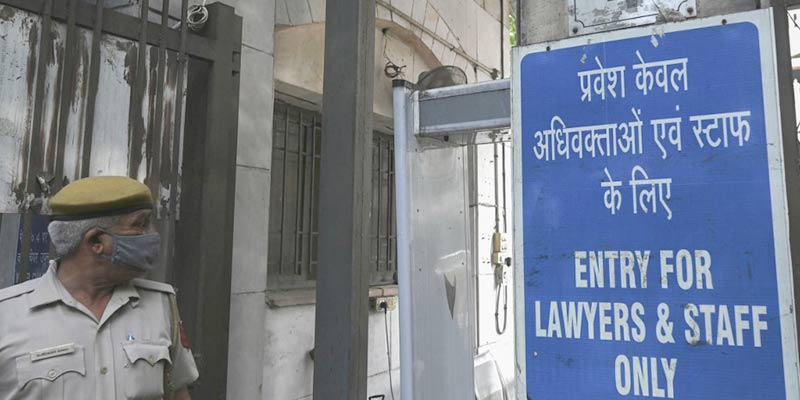- India
- Mar 21
Explainer / Development of infrastructure facilities for judiciary
• Chief Justice of India N.V. Ramana has proposed setting up of National Judicial Infrastructure Authority of India (NJIAI) for arrangement of adequate infrastructure for courts.
• According to the proposal, NJIAI will act as a central body in laying down the road map for planning, creation, development, maintenance and management of functional infrastructure for the Indian court system, besides identical structures under all the High Courts.
• There will be a governing body for NJIAI with Chief Justice of India as Patron-in-Chief.
• The proposal has been sent to the various state government/UTs, as they constitute an important stakeholder, for their views on the contours of the proposal to enable taking a considered view on the matter.
• The Registry of Supreme Court of India has compiled data on the status of judicial infrastructure and court amenities, Union Minister of Law and Justice Kiren Rijiju said in Rajya Sabha.
Scheme for the Development of Infrastructure Facilities for Judiciary
• The primary responsibility of development of Infrastructure facilities for judiciary rests with the state governments.
• Several courts are still functioning in rented premises with insufficient space and some in a dilapidated condition without basic amenities. Lack of residential accommodation to all the judicial officers also adversely affects their working and performance.
• As per the information made available by the High Courts, there are 20,814 court halls and 18,319 residential units available for judicial officers/judges in the country against the working strength of 19,350 judges/judicial officers of district and subordinate courts and sanctioned strength of 24,520.
• Currently, posts of 5,170 judicial officers are lying vacant.
• As the available infrastructure also includes court halls leased from Centre/states and rented buildings, the aim is to shift all the court halls to department-owned buildings and to match the judicial infrastructure with sanctioned strength of judges.
• To augment the resources of the state governments, the Union government has been implementing the ‘Centrally Sponsored Scheme (CSS) for Development of Infrastructure Facilities for Judiciary’.
• The Centre provides financial assistance to state governments/UTs in the prescribed fund sharing pattern.
• The scheme has been implemented since 1993-94.
• Till date, the central government has sanctioned Rs 8,758.71 crore under the scheme to states/UTs, out of which Rs 5,314.40 crore has been released since 2014-15.
• In July 2021, the government approved continuation of the Centrally Sponsored Scheme (CSS) for Development of Infrastructure Facilities for Judiciary for five years until March 31, 2026 at a total cost of Rs 9,000 crore.
• The central share will be Rs 5,357 crore including Rs 50 crore for the Gram Nyayalayas Scheme. It will be implemented in a mission mode through National Mission for Justice Delivery and Legal Reforms.
• The scheme components have been expanded, to also cover the construction of toilets, digital computer rooms and lawyers’ hall, in addition to court halls and residential units in the district and subordinate courts.
• It will help in construction of 3,800 court halls and 4,000 residential units (both new and ongoing projects) for judicial officers of district and subordinate courts, 1,450 lawyer halls, 1,450 toilet complexes and 3,800 digital computer rooms.
• Setting up of digital computer rooms will also improve digital capabilities and give impetus to the digitisation initiation being pursued as part of Digital India vision.
• This will help in improving the functioning and performance of the judiciary in the country and will be a new step towards building better courts.
• Pursuant to the extension of the scheme and introduction of new features in the scheme, revised guidelines have been issued.
Monitoring of the scheme
• An online monitoring system has been set up by the department of justice enabling data collection on progress, completion of court halls and residential units under construction as well as better asset management.
• Department of justice has developed an online monitoring system with technical assistance from ISRO.
• The upgraded “Nyaya Vikas-2.0” web portal and mobile application is used for monitoring physical and financial progress of CSS judicial infrastructure projects by geo-tagging completed and ongoing projects.
• Quarterly review meetings are held with the representatives of all states/UTs and High Courts to review the status of implementation of projects.
• Regular state level meetings of the monitoring committee are held by various High Courts, states with state chief secretaries and PWD officials to enable speedy and good construction.
Manorama Yearbook app is now available on Google Play Store and iOS App Store

